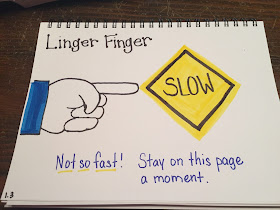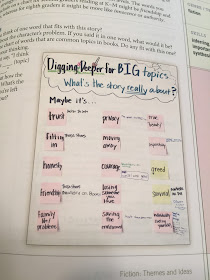Hey there! Thanks for coming back for another installment of our summer book study.
If you've missed the previous ones, check them out here:
Don't have the book yet? Grab it here: The Reading Strategies Book (affiliate link). This is definitely one of those teaching books you will use!
I have to admit this study has helped me be accountable to press on...sometimes it is hard to stay motivated in the summer. Am I right?
However, this book has given me so many great ideas for the upcoming year, that I am really starting to get excited about putting the strategies into action.
I am really excited about this...
If you follow me on Instagram, you saw that one of the few summer purchases I've made was this sketch book. I can't take credit for this idea (it was shared in this Facebook group for The Writing Strategies Book), but I fell in love with it! Especially since I will only be teaching small groups or one-on-one this year. It is a great way to have all the great anchor charts at my finger tips!
***The only problem is if I make all the charts, I need about 4 sketch books! Eeek! And I will have offices at two locations (20 miles apart), so I would want books at both places. Any other ideas (other than being VERY picky which charts I make???***
In the introduction to this goal, Serravallo shares that, "It takes imagination, inference, determining importance, and ability to synthesize all that happens to try to understand the ideas that are hiding." It sounds so complicated! I appreciated the quote she included that simplifies it this way, "...we are likely to feel themes in our gut." (Stephanie Harvey and Anne Goudvis)
Let's get on to a few of my favorites!
7.6 What Are You Left With?
Focus on last words.
I'll admit the example of Ivy and Bean got my attention because my second graders had taken an interest in the Ivy and Bean books this year. :-)
Serravallo suggests we reread the last paragraph or page and think about what the author leaves us to think about. Then say it like a lesson (i.e. I learned...).
7.7 Mistakes Can Lead to Lessons
I love this strategy because it can be a tool to teach a life lesson as well (you might remember from last week that I like those).
This strategy encourages students to think about the mistakes characters make and what he or she learned from them.
I made this simple graphic organizer to use with my students. Click on the picture to get it for free.
7.12 Dig Deeper to Find a Story's Topics
The anchor chart on this one...LOVE it!
I think I liked it so much because it says, "maybe it's..." Even in the introduction of this section, it talked about different readers reading the same story and interpreting the theme differently because of prior knowledge and experiences. I think using this chart would acknowledge that and help students work together to come to an agreement about the theme.
This goal has us moving into the area of comprehending nonfiction.
The introduction to this section had me giggling. I could just hear my littles spouting off their newly learned WOW facts!
Serravallo reminds us that, "...children are more likely to learn and remember the information when they can create mental files, storing and organizing the information inside larger categories."
8.2 Notice What Repeats
My younger readers definitely need to focus on what repeats! It is so important for them as they gain confidence as readers, and I hadn't really considered how this would also help them find what the book is mostly about.
8.5 Boxes and Bullets
In this strategy, what the story is mostly about goes in the "box" and the supporting details are bullet points. She suggests using notebook paper or even a sticky note and simply jotting a box with a few bullet points under it. Students are asked to consider where the information goes in the graphic organizer as they read.
Simple and effective!
8.11 Add Up Facts to Determine Main Idea
This strategy encourages the reader to focus on one section. Read several paragraphs and list several facts. Then determine what the section is mostly about. As students continue reading, it is important to encourage them to revise their main idea if needed.
That last part is what made this one a favorite. I know I've had students make up their mind about the main idea and then not revise when given new facts. It is a simple prompt that will make them question their initial thought and hopefully formulate a more thought out main idea.
---------------------
Thanks for sticking with me to the end! I feel like these posts are LONG, but hopefully worth it! ;-)
I want to hear from you! Tell me about your favorites either in the comments below or on our Facebook page.
Don't forget to check out the other blog posts below for more thoughts and ideas!
8/1/17 - So sorry about this link up issue. I'm working on it!




































